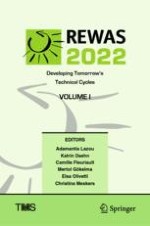2022 | OriginalPaper | Chapter
Assessing the Future Resource and Environmental Impacts of China's Aluminum Industry: Implications of Import and Export Transition
Authors : Shupeng Li, Tingan Zhang
Published in: REWAS 2022: Developing Tomorrow’s Technical Cycles (Volume I)
Publisher: Springer International Publishing
Activate our intelligent search to find suitable subject content or patents.
Select sections of text to find matching patents with Artificial Intelligence. powered by
Select sections of text to find additional relevant content using AI-assisted search. powered by
